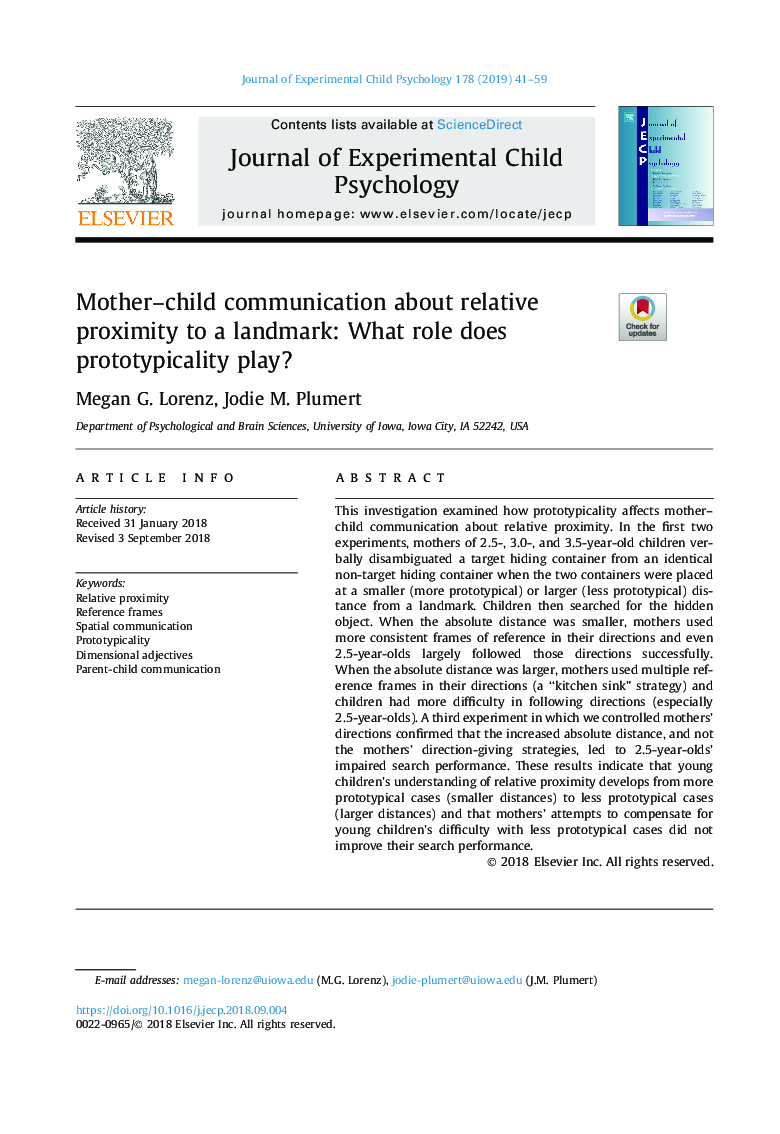| Article ID | Journal | Published Year | Pages | File Type |
|---|---|---|---|---|
| 11262797 | Journal of Experimental Child Psychology | 2019 | 19 Pages |
Abstract
This investigation examined how prototypicality affects mother-child communication about relative proximity. In the first two experiments, mothers of 2.5-, 3.0-, and 3.5-year-old children verbally disambiguated a target hiding container from an identical non-target hiding container when the two containers were placed at a smaller (more prototypical) or larger (less prototypical) distance from a landmark. Children then searched for the hidden object. When the absolute distance was smaller, mothers used more consistent frames of reference in their directions and even 2.5-year-olds largely followed those directions successfully. When the absolute distance was larger, mothers used multiple reference frames in their directions (a “kitchen sink” strategy) and children had more difficulty in following directions (especially 2.5-year-olds). A third experiment in which we controlled mothers' directions confirmed that the increased absolute distance, and not the mothers' direction-giving strategies, led to 2.5-year-olds' impaired search performance. These results indicate that young children's understanding of relative proximity develops from more prototypical cases (smaller distances) to less prototypical cases (larger distances) and that mothers' attempts to compensate for young children's difficulty with less prototypical cases did not improve their search performance.
Related Topics
Social Sciences and Humanities
Psychology
Developmental and Educational Psychology
Authors
Megan G. Lorenz, Jodie M. Plumert,
